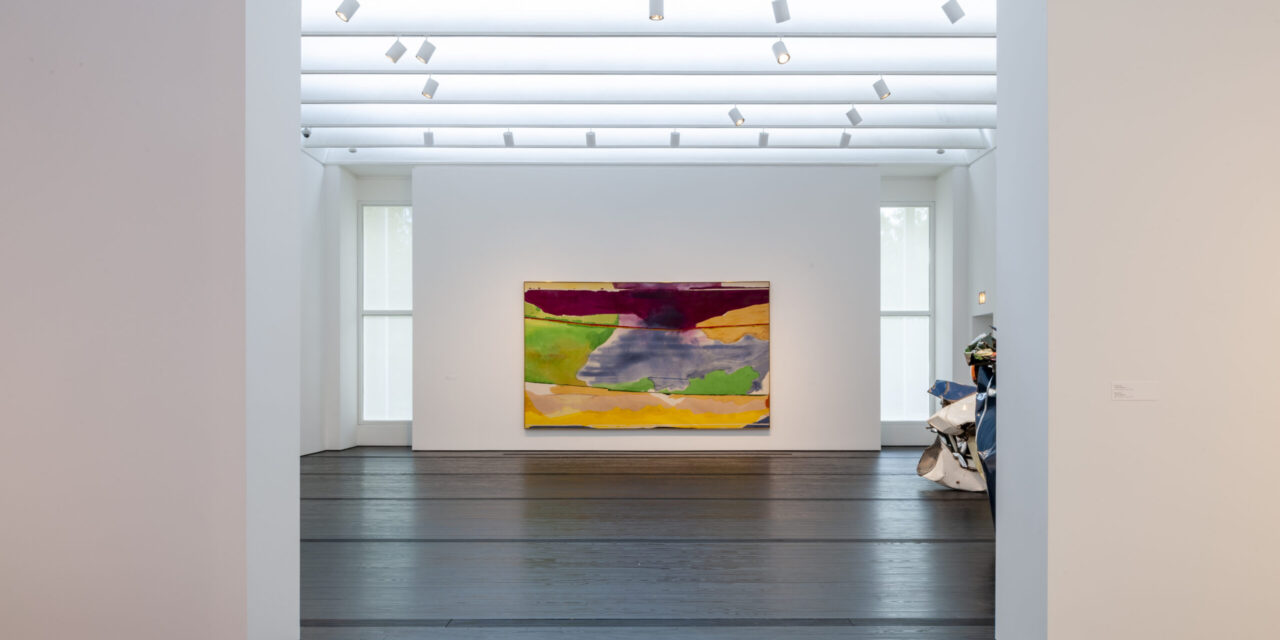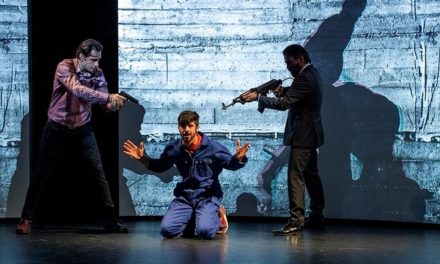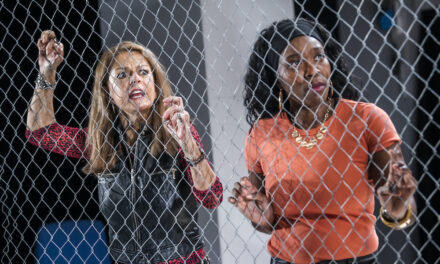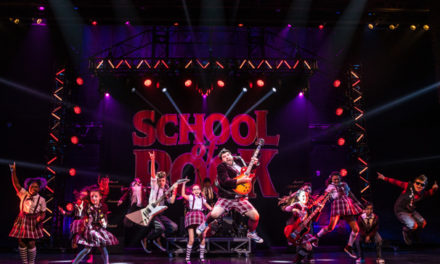We’ve all had those days – the days that, what one friend calls “learning days,” where nothing seems to go right and the most obnoxious parts of humanity reach into your life. Of course, there are larger issues at play in the wider world today, but who doesn’t need a respite from the office bully or the noisy restaurant next door? To quote T.H. White, when the once and future King Arthur finds himself in uncertain and grief-ridden times, Merlin advises, “The best thing for being sad is to learn something.” A new streaming series courtesy of DACAMERA – which in real life is located in Houston – called Hearing Color, Seeing Time intends to do just that. By pairing music, art, and lecture, this unique series attempts to allow audiences to consider established pieces in innovative ways and “to learn something.”
Hybrid Vigor: Frankenthaler and Ravel, the first in the DACAMERA series, streamed on YouTube on October 20th, presented Maurice Ravel’s Une Barque Sur L’ocean alongside Helen Frankenthaler’s 1973 painting Hybrid Vigor.
The performance opened with pianist Sarah Rothenberg, who is also DACAMERA’s Artistic Director, seated at a grand piano in one of Houston’s Menil Collection galleries. To the right of the piano, hung on the far wall of the space was the ravishing 103 x 172.5 inch acrylic on canvas. The Frankenthaler abstract painting dominated the space with a wash of undulating colors and shapes. Rothenberg opened with commentary about the connections between these two works of art explaining that, while it’s challenging to talk about abstract works, as Baudelaire wrote, sometimes the combination of two difficult pieces can clarify and reveal the heart of the works. She added that the DACAMERA series’ experience will allow the audience to spend time with these works in an unusually intimate way and advised the audience to note that painting terms are often used to describe music: color, texture, shape. After this short introduction, Rothenberg played through the Ravel while the camera lingered on sections of the painting, shifting slowly between close-ups and then pulling back to savor Hybrid Vigor in its entirety.
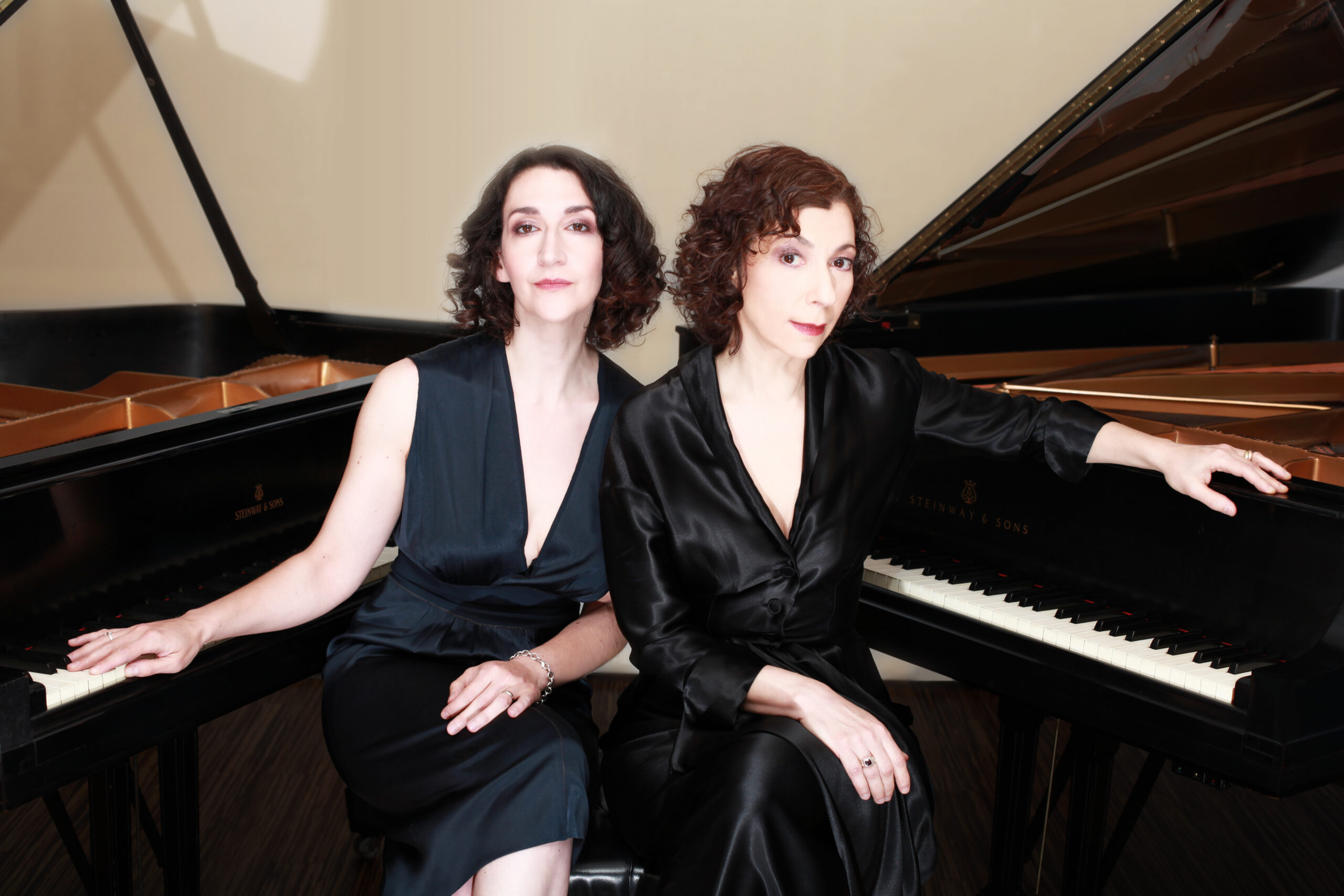
Marilyn Nonken and Sarah Rothenberg. Photo courtesy of DotDotDotMusic.
The Ravel performance was short, less than 10 minutes, and once complete, Rothenberg began unraveling the work phrase by phrase while connecting the passages to sections of Frankenthaler’s canvas. Rothenberg’s premise was that both works attempt to summon abstract versions of the natural world. Ravel’s work moves from initial smooth sailing, gently rolling, repetitive sections evoking a sense of a boat rocking on the ocean, building to a climactic section on stormy seas, and finally resolving to peaceful oceans again. Frankenthaler’s work similarly translates nature to her canvas with blues and greens harmoniously blending on the lower half while an eruption of dark plum across the top resembles a storm gathering, yet a pale lemony yellow peeks out above the turbulent plum offering the calm after the tempest.
Rothenberg was a thoughtful and considerate guide during this lesson, offering delectable tidbits about Frankenthaler’s process such as the breakthrough of moving her canvases to the floor after a visit to Jackson Pollock’s studio during the height of his drip painting days.
An additional delight is that the Hybrid Vigor performance was bookended by a recording of Rothenberg playing Eric Satie’s Gnossiennes Nos. 1, 3, and 4. These peaceful, introspective pieces acted as an experiential palate cleanser to better attune the audience’s ears and eyes in preparation for the lesson to come. The entire Hybrid Vigor: Frankenthaler and Ravel performance and lecture clocked in at less than an hour, but the opportunity to learn something provided a welcome escape from the jangling of ordinary days.
In future events, Rothenberg and flutist Claire Chase couple major works of art with musical companions, such as Morton Feldman’s Palais de Mari and his inspiration springing from ancient art. Chase connects Cy Twombly and contemporary composers, such as Felipe Lara, Marcos Balter, Suzanne Farrin, and Erik Ulman. All events are free and streamed on YouTube, but reservations are required and are available at DACAMERA’s website: https://www.dacamera.com.
This post was written by the author in their personal capacity.The opinions expressed in this article are the author’s own and do not reflect the view of The Theatre Times, their staff or collaborators.
This post was written by Clare Cioffero.
The views expressed here belong to the author and do not necessarily reflect our views and opinions.

